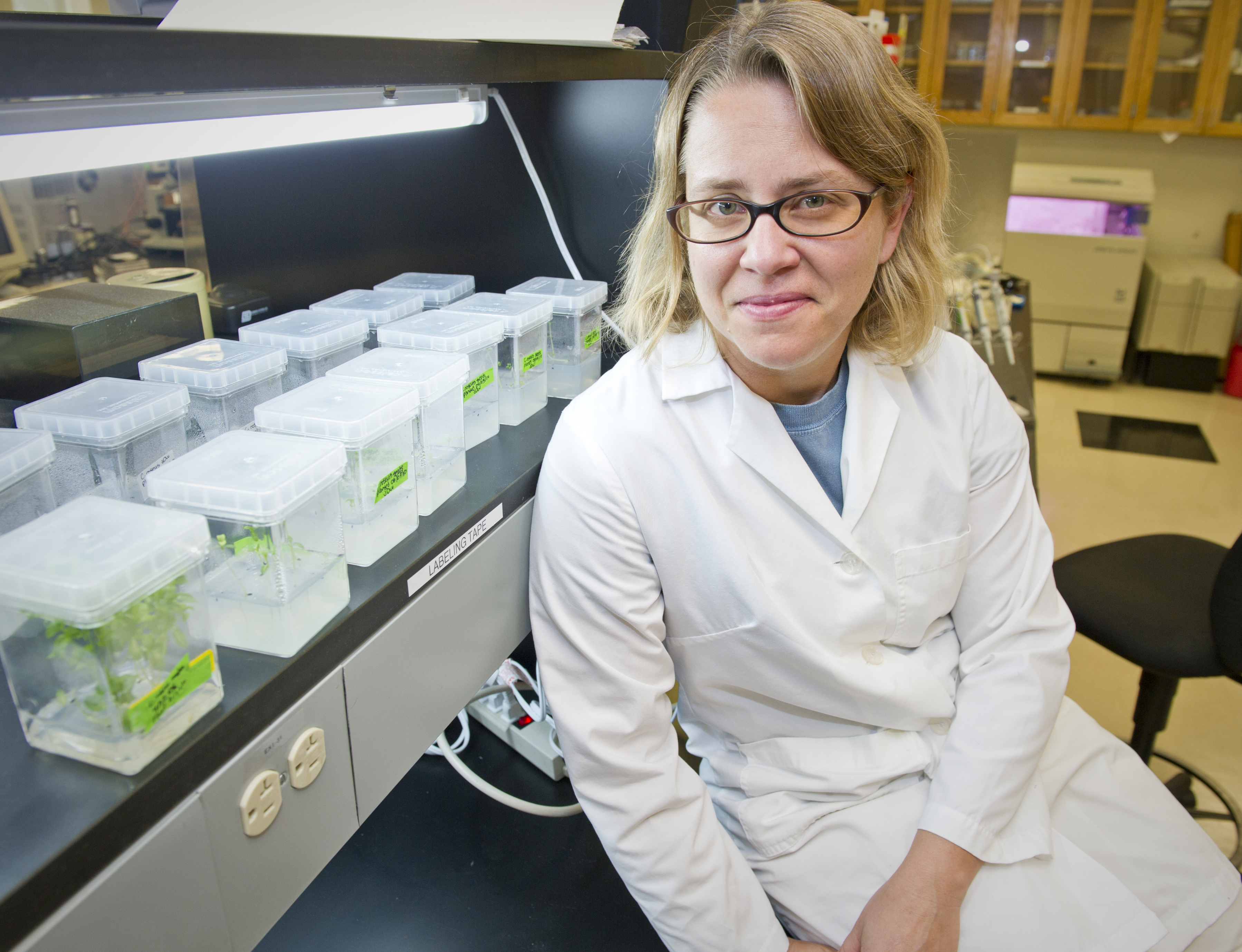by Jeff Cutler
Human bodies work in odd ways. But the majority of the population figures it’s enough that blood gets pumped, air gets exchanged, and synapses fire. In fact, most people don’t even think about the physiological machinations our bodies go through every second of every day.
Erin J. Cram, PhD isn’t most people. To her, the actions and stimuli present in the human body are the focus of her life’s work in Molecular Cell Biology and Genetics. Through these studies, scientists are determining how our systems function and the magic that happens within the human body.
But this research wouldn’t be happening without a grant from the National Institutes of Health. Cram was recently awarded $1.6 million to focus on how cells respond to certain stimuli. Specifically, the goals of the grant are to understand how a tube of cells produce a coordinated response to being stretched. Using various video imaging and genetic techniques, Cram is exploring how mechanical forces work inside the human body.
There have been other studies done, but Cram says the scientific community is now making more in-depth discoveries – and that wouldn’t be possible without the grant, the resources at Northeastern, and the work that came before from other scientists.
“Despite key insights from biophysics on single molecules and studies of isolated cells in culture dishes,” said Cram, “it is not at all well understood how tubes of cells in a living animal sense mechanical forces (flow, pressure, stiffness) and produce a coordinated response.”
Her past research was peripherally related as it focused on cancer metastasis and characterizing a novel regulator of cell migration. Looking at mechanical action and cells is a unique approach that also has a specific medical and clinical focus.
“We seek to understand how cells in tubes respond appropriately to stimuli,” said Cram. “This is relevant to many different physiological situations, but since we are studying a tube of smooth muscle-like cells, the cardiovascular system is one of the most relevant. We hope to identify new genes that are needed for these cells to respond appropriately to stress.”
While it might seem logical that mechanical functions in the body would directly affect health, the science requires identifying genes that use cells to produce a coordinated response to being stretched. It’s insight like that that comes from painstaking attention to detail and a coordinated approach.
“We have developed or adapted many of the imaging tools we need to perform this work and established interdisciplinary and international teams to move the work forward,” said Cram. “The work, of course, also builds on the work of many others who have worked on cell response to forces and who have established the nematode as a great animal system for this sort of study.”
Using fluorescent biosensors, Cram and her team can make real-time videos of force sensation and response in action in live animals. The result allows them to view changes on media that can be referenced repeatedly. Sometimes the tools they’re using to move the project ahead impress even Cram.
“The videomicroscopy we do has a ‘wow’ factor for me every time,” she said. “Of course, it is also fun to discover something new. The most rewarding thing for me, though, is to help students find their way as scientists.”
In her role as professor and researcher, Cram says the College of Science and College of Engineering keep her surrounded by the right people. She credits a talented team of undergraduate and graduate students as well as fellow professors who have “a deep commitment to education in addition to being at the forefront of their fields scientifically.”
Looking ahead, Cram says she hopes to develop a mechanical and genetic model of how this specific tube of cells functions and to test the relevance of the team’s predictions in other tube systems, like the mammalian bronchial airways or cardiovascular system.
Ultimately, Cram says she’s wants to show people the wow of research and scientific discovery.
“I hope to send forth well prepared students into the world who are excited about science and who will make an impact on science, engineering, medicine, policy, and other fields,” she said.

